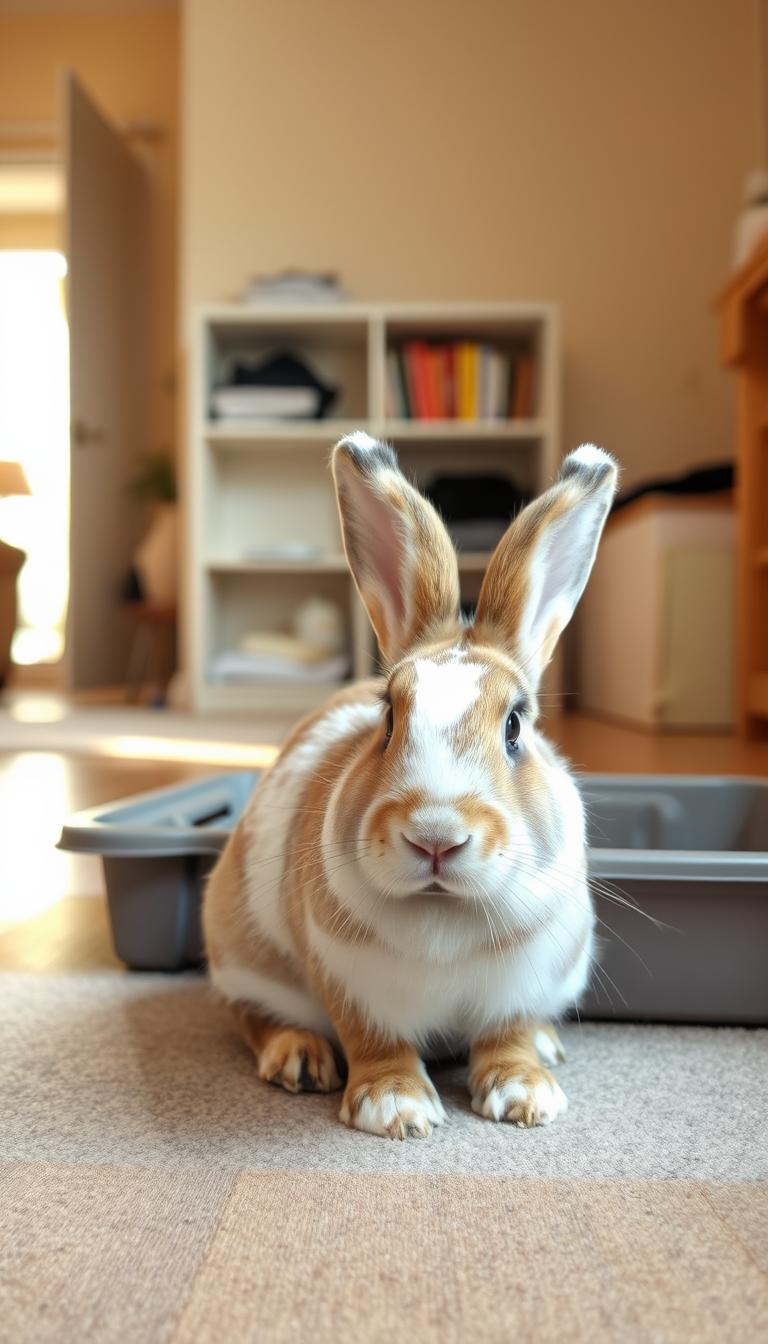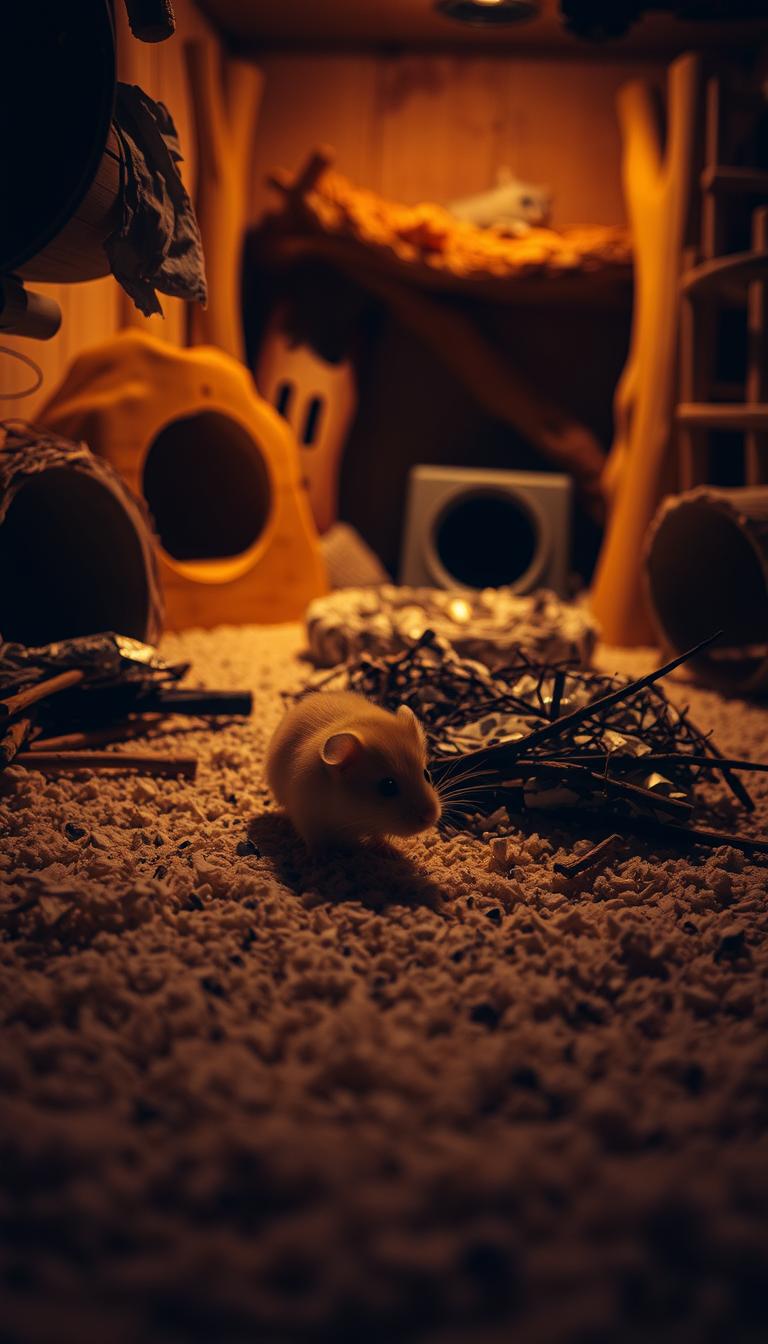If you’re considering bringing a bunny into your home, you might wonder if gender plays a role in litter training success. While some assume one sex has an advantage, the reality is simpler: spaying or neutering matters far more than biology. Both male and female rabbits can learn consistent bathroom habits with the right approach.
Unneutered pets often mark territory, which can slow progress. Females may show slightly less of this behavior naturally, but altered rabbits of either gender typically adapt quickly. The key is addressing hormonal instincts early through veterinary care.
Younger bunnies often pick up litter habits within days after surgery. Older ones might need weeks of gentle reinforcement. Placement of boxes, positive rewards, and patience work better than focusing on gender differences. You’ll find that individual personality and routine consistency often determine outcomes more than whether your pet is a buck or doe.
This guide breaks down what truly influences training success. You’ll learn practical strategies that apply to all rabbits, along with tips to create a stress-free environment for your furry friend. Let’s explore how to set up your space—and your expectations—for the best results.
Table of Contents
Understanding Rabbit Litter Training Fundamentals
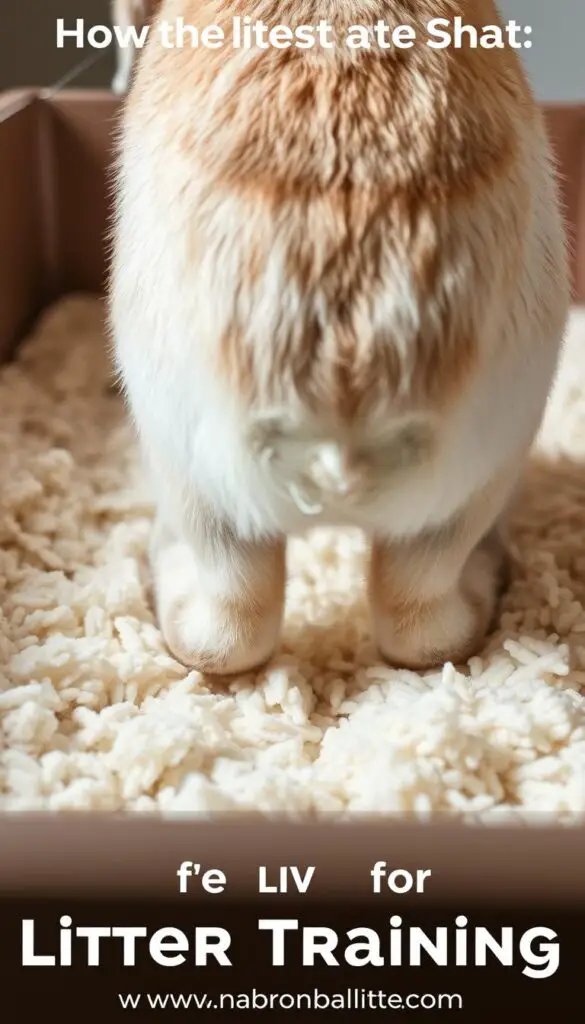
Bunnies have built-in habits that make them surprisingly cooperative students when you work with their instincts. These animals naturally pick specific spots for elimination—often corners or quiet zones—to keep their living spaces tidy. By aligning your training methods with these preferences, you create a system that feels intuitive rather than forced.
Natural Bathroom Behaviors of Rabbits
Your furry friend’s urge to use one corner repeatedly isn’t random—it’s an evolutionary survival tactic. Wild rabbits avoid spreading scent trails that attract predators. Domestic pets retain this instinct, making them likely to adopt a litter box placed where they already relieve themselves.
Benefits of a Designated Litter Area
A consistent bathroom zone simplifies daily care while supporting pet health. You’ll spot changes in urine volume or stool texture faster, allowing early vet visits if needed. Plus, confined waste means less scrubbing and more time for bonding.
Territorial marking becomes manageable when your bunny associates the litter area with scent expression. Pair this setup with odor-absorbing paper pellets, and you’ll maintain freshness without chemical sprays that irritate sensitive noses.
Setting Up the Perfect Litter Training Environment
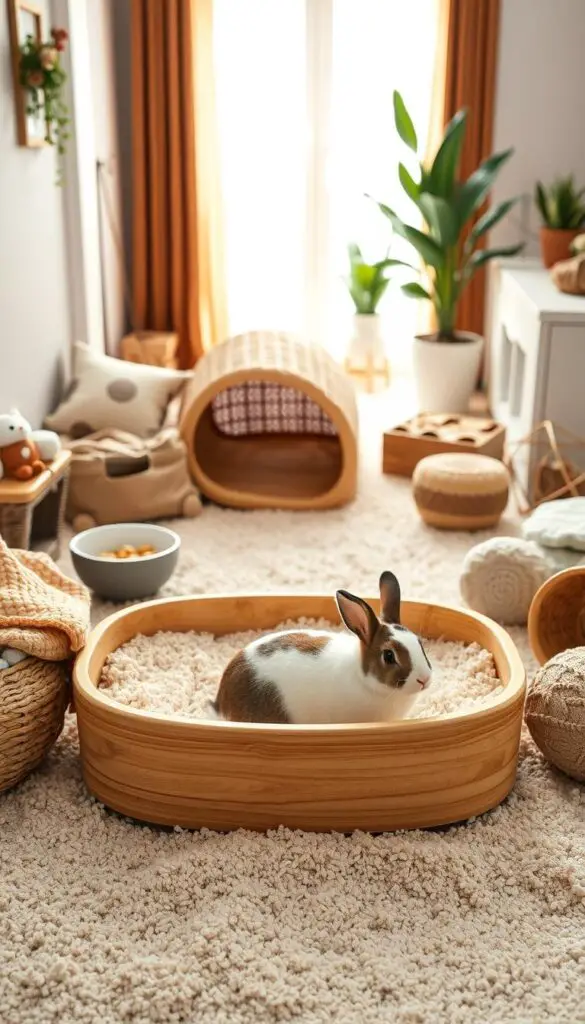
A well-planned setup makes litter training smoother for you and your pet. Start by observing where your bunny naturally eliminates—this spot becomes the ideal location for their bathroom zone. Consistency in placement and materials helps build lasting habits.
Choosing the Right Litter Box and Litter
Select a container that allows your rabbit to turn around and stretch out. For single pets, a 9″x12″ box works best, while pairs need 15″x18″ models. Low-sided designs prevent tripping and encourage regular use.
Safe bedding options include paper-based pellets, compressed sawdust, and oat or alfalfa blends. Avoid pine shavings, clay litters, and clumping varieties—these can cause health issues. Place fresh hay in one corner, as bunnies often munch while relieving themselves.
Creating a Safe, Comfortable Enclosure
Ensure the litter area sits in a quiet but accessible space. Your pet should easily reach food and water without stepping through waste. Leave ample room around the box for hopping and stretching—crowded spaces discourage consistent use.
Use odor-absorbing materials to maintain freshness. Clean soiled areas daily, replacing 1/3 of the litter to preserve familiar scents. This balance keeps the space inviting while promoting good hygiene.
Are Male Or Female Rabbits Easier To Litter Train?
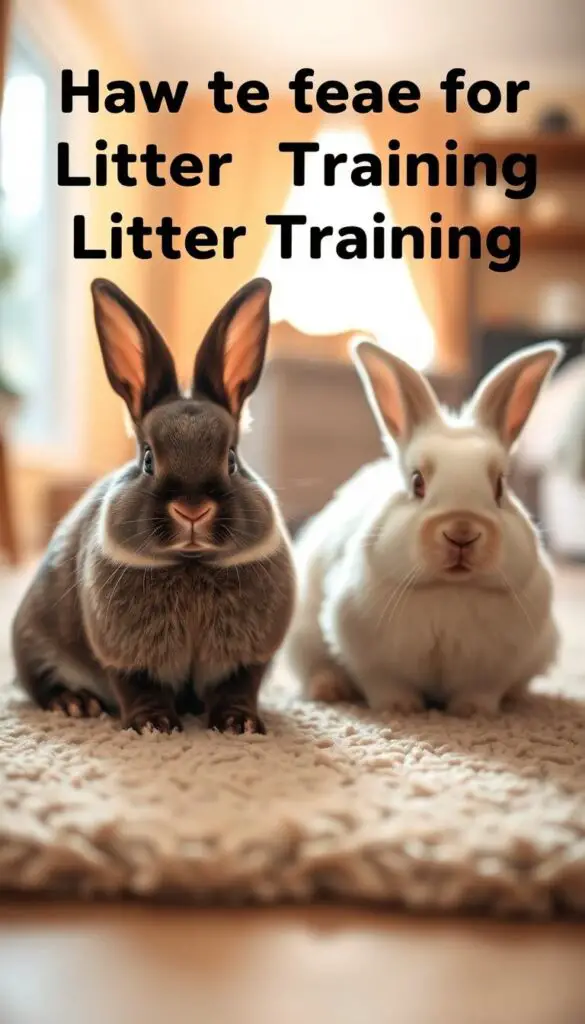
Does your rabbit’s biological sex affect how quickly they’ll master their litter box? While some pet owners report differences, hormonal factors ultimately play a larger role than gender. Both spayed neutered pets typically achieve similar results with consistent training.
Gender Impact and Behavioral Considerations
Historically, female rabbits showed slightly faster progress due to less frequent territory marking. Unaltered males often spray urine to claim space or attract mates. Females might avoid this behavior—until hormonal surges during false pregnancies trigger similar habits.
Unneutered pets of both sexes face distractions. Males fixate on mating urges, while females rearrange bedding obsessively when hormonally active. These instincts make consistent bathroom use challenging. Spayed neutered rabbits redirect energy toward routine behaviors, becoming equally cooperative students.
Post-surgery changes are dramatic. Urine spraying drops by 90% in altered pets, and fecal marking becomes rare. Your neutered rabbits will focus more on food puzzles than marking territory. This hormonal reset creates a blank slate for establishing litter habits.
Ultimately, your bunny’s personality matters most. Some learn in days; others need weeks. Pair patience with veterinary care, and you’ll see progress regardless of gender. Training success hinges on biology management, not biology itself.
Practical Steps for Litter Training Your Rabbit

Ready to turn your fluffy companion into a litter box pro? Start by creating a structured routine that works with their instincts. Confine your pet to a cozy enclosure with two litter boxes—one in their main space and another in their play area. This setup builds consistency while letting them explore safely.
Step-by-Step Training Process
Begin with a small space like a puppy pen or bunny-proofed room. Place boxes in corners where your pet naturally eliminates. Add fresh hay to each container—they love nibbling while relieving themselves. Watch closely for preferred spots during the first week.
If accidents happen outside the box, move it to their chosen corner. Clean soiled areas with vinegar to remove scent markers. Gradually expand their roaming space only after they’ve used boxes reliably for 3-4 days. Most learn within 2 weeks with this method.
Tips for Using Positive Reinforcement
Celebrate every success! Offer a sprig of cilantro or a tiny apple slice when they use the box. Gentle head rubs work too—many rabbits adore affection as a reward. Avoid scolding accidents—it confuses them and slows progress.
Rotate toys near the litter area to keep it inviting. Replace 1/3 of the bedding daily to maintain freshness without losing familiar scents. With patience and tasty incentives, your pet will master their bathroom routine faster than you expect!
Troubleshooting Common Litter Training Issues
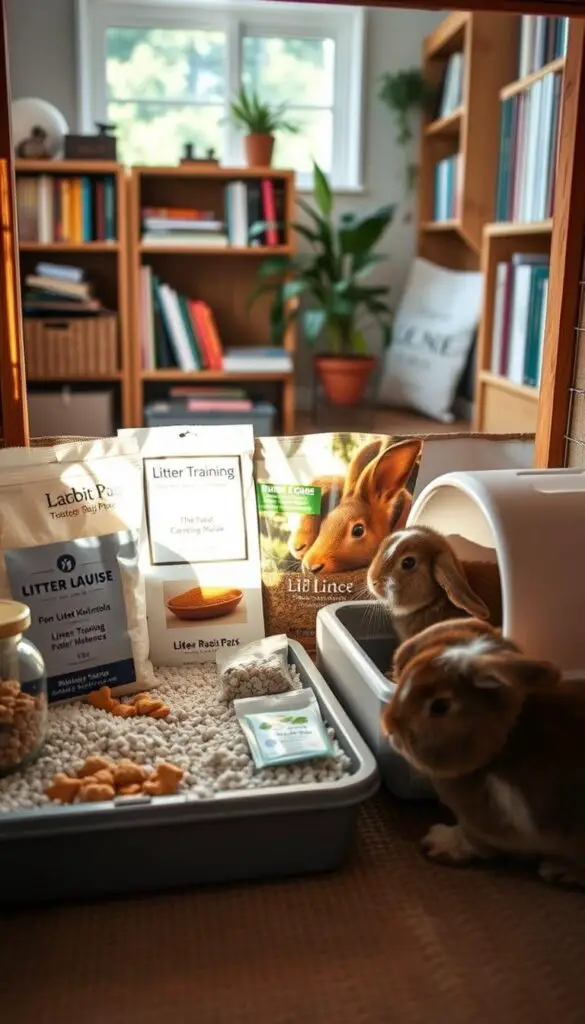
Even well-trained bunnies sometimes need extra guidance. When accidents happen, remember they’re communicating—not rebelling. Your response can turn setbacks into progress.
Addressing Accidents and Inconsistent Habits
Finding urine outside the litter box? Place a new box exactly where puddles appear. Rabbits stick to favorite spots like clockwork. Add hay to encourage using litter areas consistently.
Scattered fecal pellets? Don’t stress—dry droppings clean up fast. For messy diggers, try covered boxes or 8-inch-high sides. Territorial pairs might need separate litter boxes if they shove each other.
Adapting Environment and Litter Placement
Sudden changes in habits often trace to disruptions. Moved the box? Switched bedding? Go back to their preferred setup for a week. Clean accidents with vinegar to erase scent markers.
Check with your vet if bathroom habits shift dramatically. Urine infections or arthritis can make hopping into boxes painful. Early treatment protects your pet’s health and training progress.
Advanced Tips for Litter Training Older or Unneutered Rabbits
Teaching mature bunnies or intact pets requires tailored strategies. While younger altered rabbits often adapt quickly, older companions might need extra time and creative approaches. Focus on consistency rather than speed—their established habits can work in your favor.
Working With Established Patterns
Older rabbits often choose predictable bathroom spots naturally. Place litter boxes where they already relieve themselves—this leverages their existing routine. Use larger containers if arthritis is a concern, adding low-entry ramps for easy access.
Unneutered pets benefit from scent management. Clean marked areas daily with vinegar-water solutions to reduce territorial urges. Provide multiple boxes in high-traffic zones to satisfy marking instincts constructively.
Celebrate small wins with favorite treats when they use the box. If accidents occur, avoid scolding—simply move droppings into the litter area to reinforce proper placement. With patience, even long-term habits can shift over time.
Consult your vet about spaying/neutering if progress stalls. Hormonal changes in intact rabbits often complicate training—addressing this boosts success rates. Pair medical care with positive reinforcement for the best health outcomes.

